READY TO GET STARTED?
REQUEST A FREE ESTIMATE
Fill out the form below or call (888) 466-7849 for a free, no-obligation estimate.
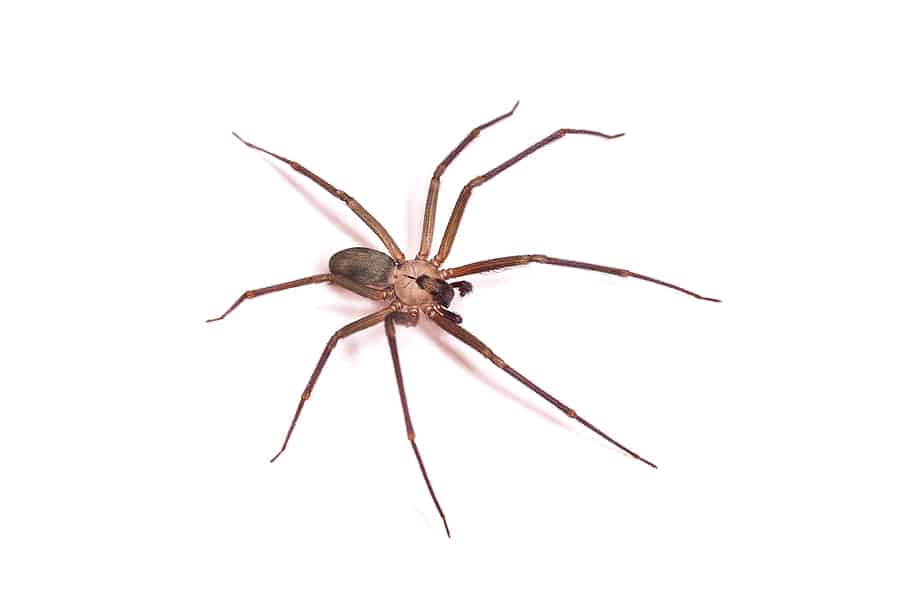
In Tennessee, we have our fair share of spiders we should be wary about. One of those spiders is the feared brown recluse. Luckily for us, most local arachnids don’t want to live in our homes, and they are easily preventable.
These spiders are ¼ to ½ inches in length and are light to dark brown in color. They have a violin-shaped mark behind their heads. They also only have six eyes compared to the usual eight. Like other spiders, they are beneficial in catching other invasive species in your home and keeping their populations down. If they weren’t harmful to humans, then it would all be fantastic.
A single bite from a brown recluse spider can bring on intense pain, swelling, fever, chills, body aches, and an ulcer at the site of the wound. Sometimes their bites can be used as a scare tactic, considered a “dry bite,” and don’t include venom. Don’t ever assume the bite didn’t contain venom and get medical attention right away.
If you begin seeing an increase in unwanted arachnids, give your local pest control company a call for a free inspection and a pest prevention plan that works!
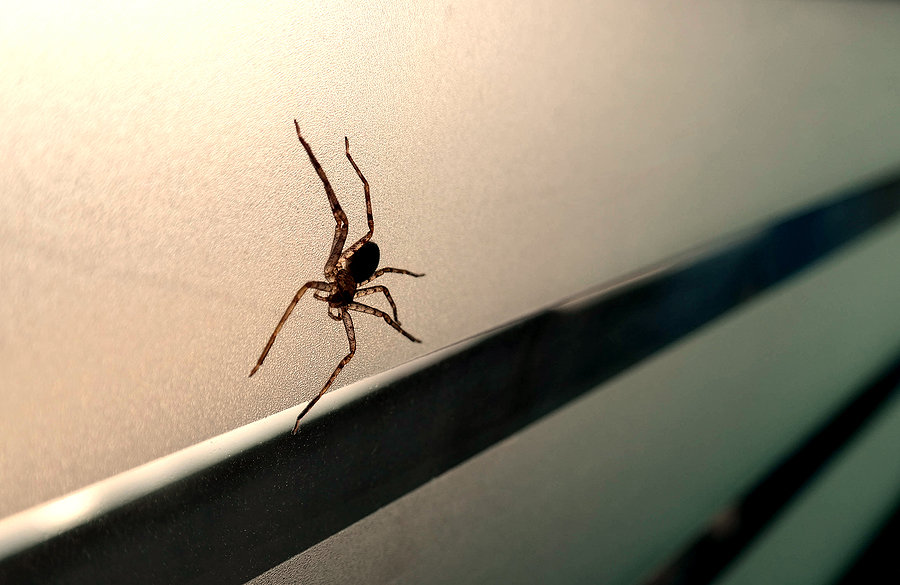
It’s a common myth that spiders come into our homes to overwinter until spring. In actuality, they most likely were already there to begin with. These household pests are more active in fall and early winter for two main reasons: they are preparing winter and the upcoming scarcity of food and they are mating and in search of a partner to reproduce with.
House spiders take up residence in your home year-round. Spiders can be beneficial to have around as a form of natural pest control as they eat other insects (even other spiders) found around your house.
One exception to this is the brown recluse spider. They will seek warmth and food indoors in the winter by hiding out in dark, unused areas of your home. Brown recluses are identified by the distinct violin-shaped mark on their back. They will bite and are considered harmful to humans.
You can prevent spiders in your home by:
If you have an issue with spiders, contact your local pest control company for an inspection.
When Does Swarming Season Begin?
Should I Worry About Cockroaches?
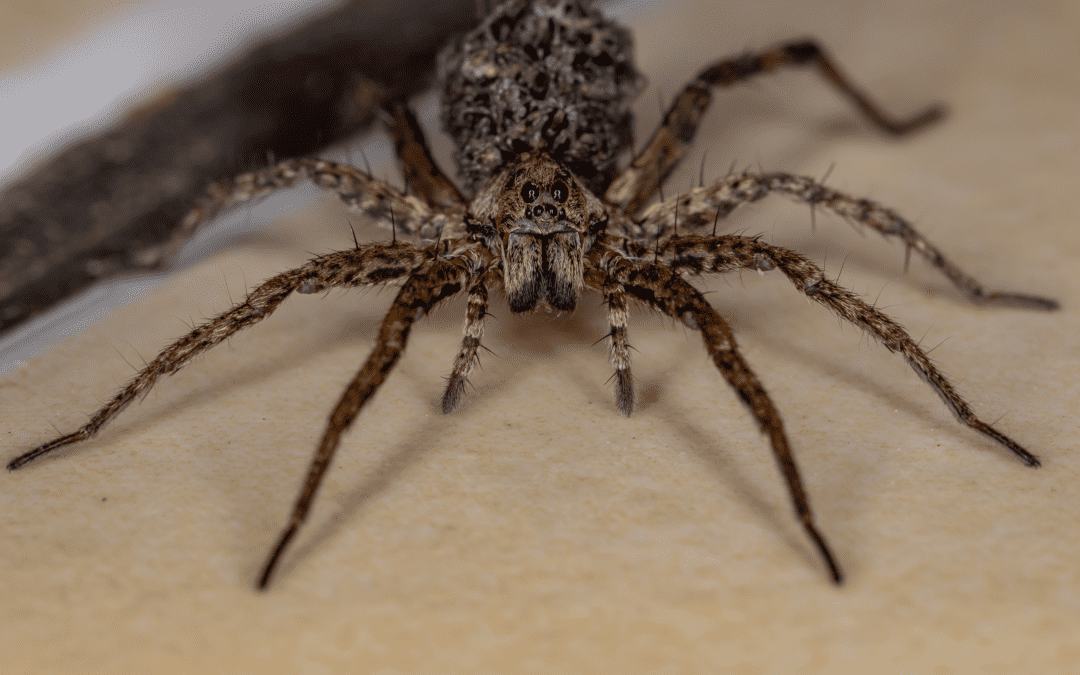
In the southern states, there are many species of spiders found and there is a good chance you’ve seen some of them. Many spiders make themselves at home in our yards, gardens, flower beds, and inside our homes. But as the weather gets cooler, you’re bound to see more spiders come inside to seek shelter from the cooler weather. Here are a few common spiders that may invade your home when the temperatures drop.
A house spider is a common name given to spiders that are primarily found inside your house. They vary in color, but most are yellow to brown with elongated abdomens. They can usually be found in ceiling corners, under furniture, and inside closets, basements, garages, and crawl spaces. When outdoors, they are often found in windows, under eaves, and near light sources.
They can be a nuisance to have but are not a threat to humans. Because of the low humidity in newer homes, house spiders are becoming less common in houses and more likely to be found in garages, sheds, barns, and warehouses.
A brown recluse spider is light to dark brown, with a signature dark brown violin shape on its back. They are commonly found outdoors in debris and woodpiles but can be found indoors usually underneath furniture, inside storage bins, and in dark recesses like baseboards. The brown recluse can also be found hiding out in closets, attics, and crawl spaces.
This spider species is one you should look out for as its bite is painful. If cornered, they will bite, leaving an ulcerating sore that must be treated by a medical professional immediately.
Wolf spiders are typically dark brown with pale markings or stripes. Their legs are long and spiny, and most have hair on their bodies. If found indoors, they are typically on the floor, especially along walls and under furniture. If found outdoors, they are usually under leaves, woodpiles, yard debris, and stones.
They can bite, but it is very rare for them to do so; even if they do it doesn’t pose a significant threat to humans. They are unique in that they don’t catch their prey in webs but will chase them down using their speed.
One of the most easily identifiable spiders in the US, these shiny, black spiders are one of the most fearsome out there. Most can identify them by their prominent red hourglass shape on their back. Black widow spiders are commonly found around woodpiles and can easily access your home by hitching a ride on your firewood. They are also found in garages, eaves, empty boxes, and even shoes that are stored away.
Females are more aggressive than males and will bite. They can be extremely harmful to humans and their bite should be taken seriously. Symptoms from a bite include fever, elevated blood pressure, nausea, and sweats. It should be treated immediately to stop any further neurological damage.
Spiders are more common in the fall and winter as they make their way indoors, so be on the lookout for these spiders once the temperature begins to drop. If you suspect a spider problem, contact your local pest control company who can help identify the type of spider you have and provide you with a thorough inspection and treatment plan that is right for you and your property.
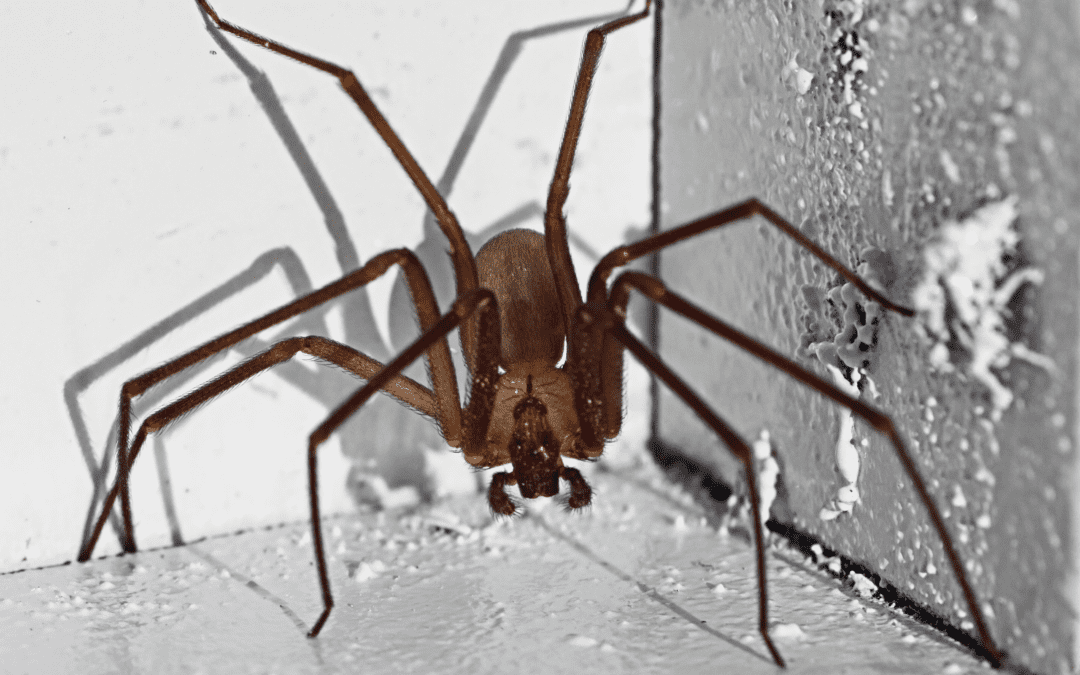
Encountering spiders isn’t on everyone’s list of daily things to do. The good news is that the chance of encountering a spider that is harmful to you is slim, but it’s still possible. A common one that you want to avoid is the brown recluse spider. How can you identify the brown recluse compared to other, less harmful varieties of brown spiders? Read below to learn more about these feared spiders and how you can prevent them!
The brown recluse is ¼” to ¾” in size and some can grow larger in size. They are typically light to medium brown and have markings on their backs, with a black violin-like shape pointing to the rear of the spider.
The brown recluse is known as a recluse for a reason; they don’t tend to make it known they are nearby. These spiders will typically seek out environments that are warm, dark, and dry.
This can include an array of places, such as:
Although not aggressive, they will bite when they feel trapped. Most people are bitten by a recluse when they unknowingly reach inside a shoe, piece of clothing, or a box. They will bite if they feel provoked, but their bite is the biggest reason why brown recluse spiders are so feared.
If you are bitten, it can take a few hours to notice its effects. When a brown recluse bites, it injects its venom, causing necrosis and an ulcerating sore. Once the venom takes effect, you may experience restlessness, insomnia, and fever. The sore can leave an open ulcer, even exposing the muscles or bone. If you think you have been bitten by a brown recluse, you should seek medical attention immediately.
If you encounter a brown recluse on your property, call your local pest control company to seek professional assistance. If you see one, it could mean an infestation is occurring.
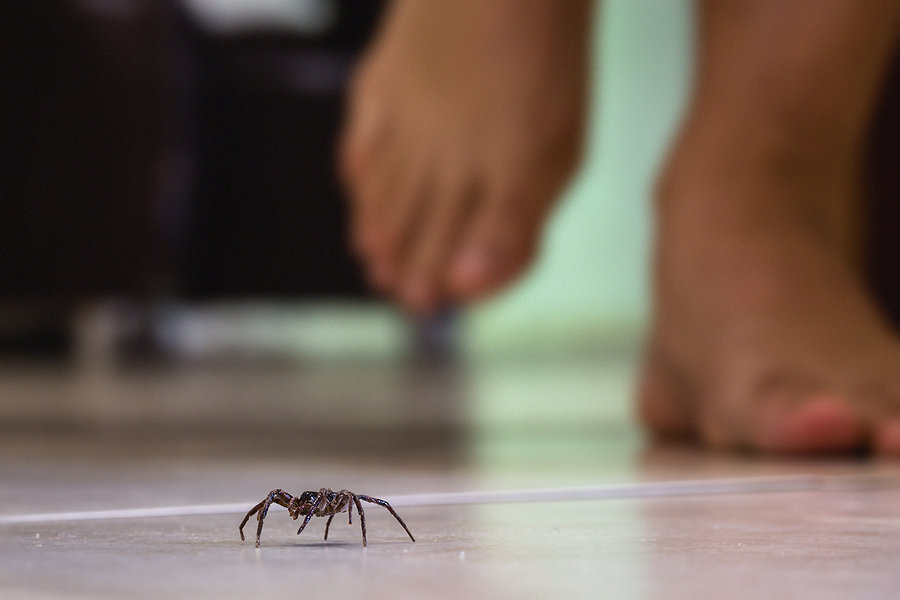
Nothing says “Halloween” like spotting a few cobwebs around the house! While it’s always fun to see cobweb decorations during this time of year, it’s not as fun having to deal with them year-round. Since the temperatures have cooled off, many spiders are looking indoors to inhabit a warmer environment. It’s important to understand common types of spiders in order to provide the best treatment if they’ve infested your home.
Brown Recluse
The brown recluse spider is light to dark brown, with a signature brown violin shape on its backs. If threatened, these spiders will bite, which can be painful and leave an open sore. If bitten, some can experience fever, restlessness, and difficulty sleeping. Brown recluse spiders can be found in debris and woodpiles. If they’ve snuck inside your home, they can often be found under furniture, inside storage items, in baseboards, closets, and crawlspaces.
Wolf Spider
Wolf spiders are dark brown with paler stripes or markings and long, spiny legs. These spiders are large and hairy across their bodies. While these spiders will bite, it’s rare that they do and are not a significant threat to humans. Inside homes, wolf spiders tend to stay near or on the floor, especially along walls and under furniture where they chase their prey instead of capturing them in their webs. If outside, they like to inhabit firewood piles, leaves, yard debris, and stones.
Common House Spider
House spiders can vary in color but are usually yellow to brown with elongated abdomens. Although not a threat to humans, they are a nuisance to have in the home as they can produce and leave behind webs throughout the house. They can often be found in ceiling corners, under furniture, and inside closets, basements, garages, and crawlspaces. If outside, you will commonly find them spinning webs around windows, under eaves, and near light sources that attract food.
By recognizing each spider species and knowing where they most often inhabit, you can utilize the correct preventative measures to eliminate the chance of an infestation. Check out some of these easy do-it-yourself spider prevention tips: